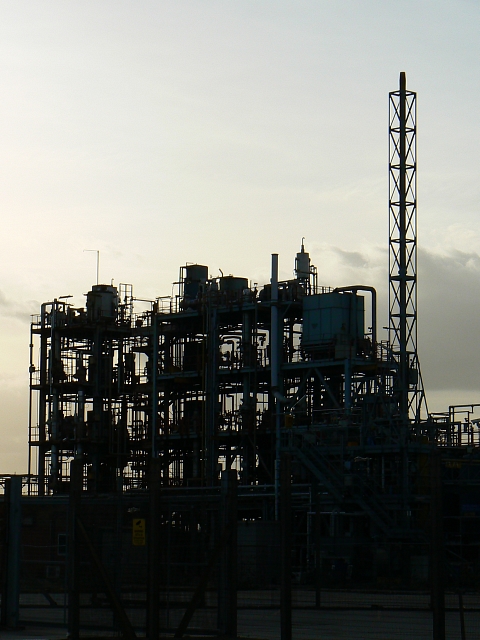Editor’s Note: There are a lot of questions when it comes to water, soil, and the air we breathe in New Orleans, so ViaNolaVie teamed up with the Chemical Engineering Service Learning Class at Tulane University, taught by Dr. Julie Albert, in order to get some of these questions answered. The series is called “Dear Big Chem-EZ” (think “Dear Abbey” but with less about “Why does my partner ignore me?” and more about “Can I actually drink my tap water?” and “What’s that smell outside my house?”). The series will be published the second Wednesday of every month. If you have questions you’d like answered, send them to TheBigChemEZ@gmail.com. For our next entry, we thought we’d take a look at concerns surrounding living near a chemical plant. Is it safe? Big Chem-EZ has your answer.
Dear Big Chem-EZ,
Chemical plants exist all around the greater New Orleans area. Is it safe to live near them?

A chemical plant outside of Avonmouth, UK.
Southern Louisiana, and the greater New Orleans area in particular, hosts production plants for several of the world’s biggest chemical and petrochemical companies. These companies, including names like Dow and Shell, account for nearly $80 billion in sales annually in Louisiana and provide more jobs to Louisiana residents than any other industry.1 In fact, for every new job created by the chemical industry, more than eight jobs are created in related or supporting sectors.1 While the positive impact that the chemical industry has on the Louisiana economy is indisputable, some residents may be concerned about the health risks posed to communities surrounding chemical plants. These concerns commonly relate to long-term, daily exposure to byproducts produced during normal plant operation.
The Environmental Protection Agency (EPA) is responsible for ensuring that these concerns do not become reality by placing restrictions on allowable emissions levels for specific chemicals and by monitoring the presence of these chemicals in the surrounding communities. Furthermore, the EPA makes this information publicly available on its website. For example, in 2011 it was determined that potentially unsafe levels of chloroprene, a chemical used in the production of the synthetic rubber neoprene, were being released into the environment by the Denka (formerly DuPont) facility in LaPlace, Louisiana. The EPA communicated information about the situation via an FAQ page that explained what chloroprene is, what dangers chloroprene exposure poses, what levels of chloroprene are allowed to be emitted, what the EPA was doing to address concerns about emissions, and much more.2 In this particular case, the EPA worked with the Louisiana Department of Environmental Quality and the Denka plant to reduce chloroprene emissions.
The EPA aims to mitigate health hazards by restricting emissions from chemical plants to safe levels. However, when this aim is unrealized, the EPA communicates information about potentially unsafe conditions to community members and other affected individuals. In order to understand if your community is safe from chemical plant emissions, visit the EPA’s webpage to view emissions data for your area and to get answers to frequently asked questions relating to the release of chemicals into your community.
-Big Chem-EZ
References:
 NOLAbeings
Multimedia artist Claire Bangser created NOLAbeings as a portrait-based story project that marries...
NOLAbeings
Multimedia artist Claire Bangser created NOLAbeings as a portrait-based story project that marries...
 Data corner: Adobe Suite (create a PDF, social media graphic, presentation, edit a photo and video
Data corner is where you go to work with analytics and top tech skills. It takes on everything from PERL and SQL to Canva and Sprout Social.
Data corner: Adobe Suite (create a PDF, social media graphic, presentation, edit a photo and video
Data corner is where you go to work with analytics and top tech skills. It takes on everything from PERL and SQL to Canva and Sprout Social.
